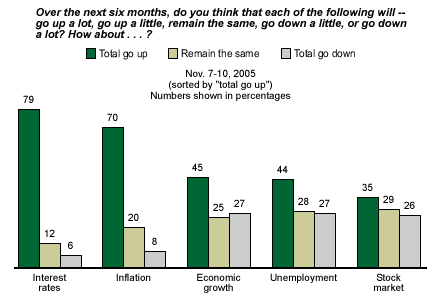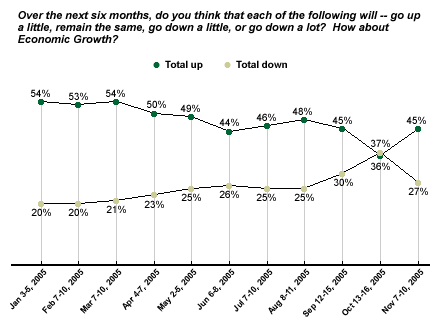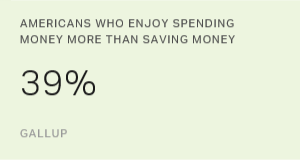Now that pump prices aren't pinching them quite so hard and jobless claims are continuing to fall, economic concerns seem to be weighing a little lighter on Americans' minds than they have in recent months. In a recent Gallup Poll*, 28% of Americans mention some aspect of the economy as the most important problem facing the nation. This is down somewhat from the 36% who mentioned economic concerns in October, and from 32% in September and August. Though specific mentions of energy prices and jobs continue to figure prominently among economic concerns, fewer Americans now mention the "economy in general" as the top problem.
Macro Optimism
In looking at opinion with respect to economic prospects, it is clear that Americans are prepared for a macroeconomic scenario dominated by higher inflation and rising interest rates. Seventy-nine percent of Americans expect interest rates to rise in the next six months, and 70% expect inflation to do the same. The percentage expecting interest rates to rise was essentially the same in November as it was in October, but slightly fewer Americans expect inflation to rise than thought so in September and October.

Despite expectations of higher interest rates and inflation, Americans' optimism about economic growth and the stock market appears to have rebounded somewhat from a gloomy October. Last month, 29% of Americans were bullish about the future of the stock market over the next six months; 35% now expect the market to go up. Forty-five percent of Americans currently expect economic growth to increase in the short term, compared with only 36% who said this last month.


In September and October, a majority of Americans (52%) expected unemployment to rise in the next six months -- likely related to higher unemployment that occurred in the aftermath of Hurricanes Katrina and Rita. This percentage moderated to 44% this month.

*Results are based on telephone interviews with 1,011 national adults, aged 18 and older, conducted Nov. 7-10, 2005. For results based on the total sample of national adults, one can say with 95% confidence that the margin of sampling error is ±3 percentage points.

